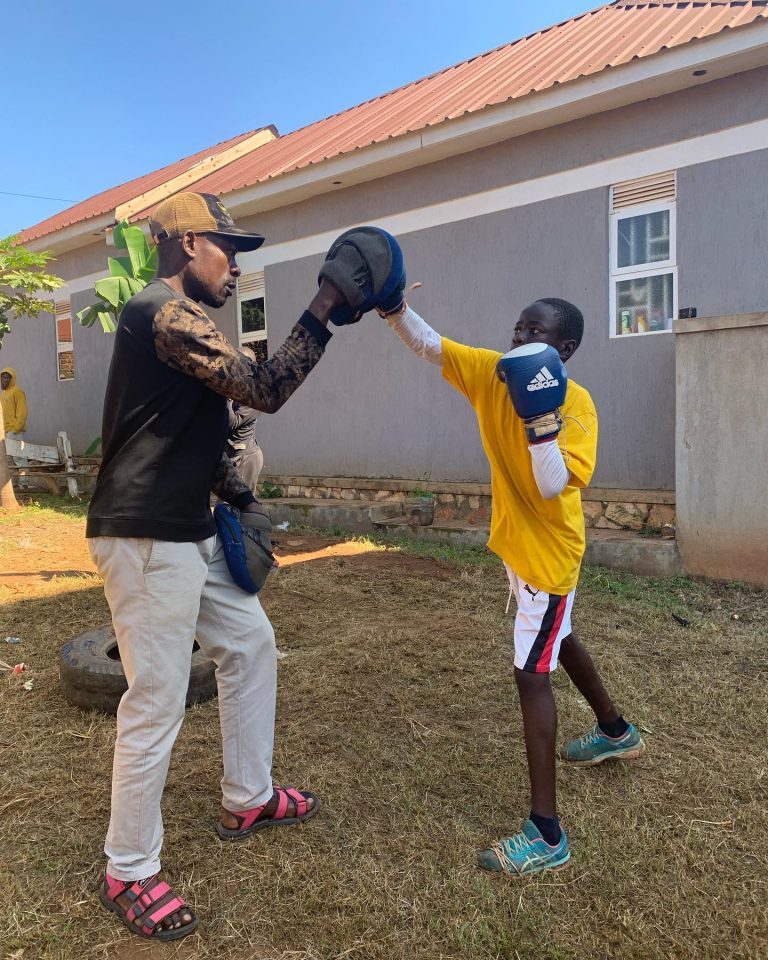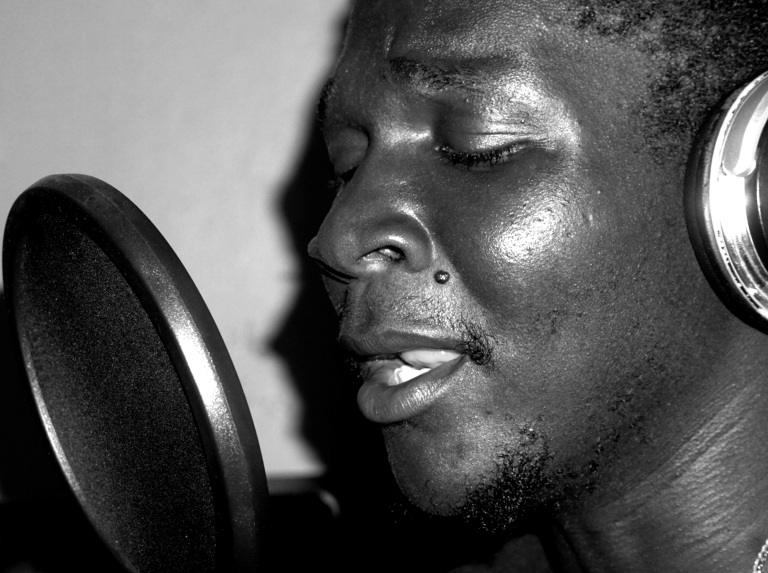Boxing
Boxing is a popular sport that involves punching, dodging, and blocking with gloves. It can be a fun and challenging way to stay fit and improve your skills. But how safe is boxing as a sport? What are the risks and benefits of participating in this activity.

Before we explore some of the facts and myths about boxing safety and offer some tips on how to reduce the chances of injury and enjoy the sport more, we would like to clear the airs that boxers’ safety is given high priority before and after the match at Aijuka records. This has been achieved by ensuring that boxers signed under our label are enjoying the benefits of having medical insurance.
First, let’s address some common misconceptions about boxing safety. Some people may think that boxing is very dangerous and causes brain damage, dementia, or death. While it is true that boxing can cause concussions, cuts, bruises, and fractures, these are not inevitable outcomes of the sport. In fact, according to a study by the American Journal of Sports Medicine, boxing has a lower injury rate than other contact sports such as football, rugby, or hockey. The study also found that most boxing injuries are minor and do not require hospitalization or surgery.
Another myth is that wearing a helmet or headgear can prevent head injuries in boxing. While headgear can protect the face and ears from cuts and abrasions, it does not reduce the impact of punches to the brain. In fact, some studies suggest that headgear may increase the risk of concussions by creating a false sense of security and encouraging more aggressive fighting. Therefore, headgear is not mandatory in amateur or professional boxing matches.
So, what are the benefits of boxing as a sport? Boxing can provide many physical and mental advantages for those who practice it regularly. Some of these include:
- Improved cardiovascular health: Boxing can improve your heart rate, blood pressure, and oxygen consumption, which can lower your risk of heart disease and stroke.
- Enhanced muscular strength and endurance: Boxing can strengthen your upper and lower body muscles, as well as your core and back muscles, which can improve your posture and balance.
- Increased agility and coordination: Boxing can improve your reaction time, hand-eye coordination, and footwork, which can help you avoid falls and injuries in daily life.
- Reduced stress and anxiety: Boxing can release endorphins, which are natural chemicals that make you feel happy and relaxed. Boxing can also help you vent your frustrations and emotions in a healthy way.
- Boosted confidence and self-esteem: Boxing can challenge you to overcome your fears and doubts and to achieve your goals. Boxing can also help you develop self-discipline, respect, and sportsmanship.
How can you make boxing safer for yourself and others? Here are some tips to follow:
- Choose a reputable gym or club: Make sure you join a gym or club that has qualified instructors, proper equipment, and safety rules. Avoid places that promote violence or illegal activities.
- Learn the basics: Before you start sparring or competing, learn the basic techniques of boxing, such as how to punch, block, move, and breathe. Practice with a partner or a coach who can give you feedback and correct your mistakes.
- Wear protective gear: Always wear gloves, mouthguards, wraps, and groin protectors when you box. These can prevent injuries to your hands, teeth, wrists, and genitals. You may also choose to wear headgear if you prefer.
- Warm-up and cool down: Before and after each session, do some stretches and exercises to prepare your muscles and joints for the activity. This can prevent cramps, strains, and sprains.
- Hydrate and rest: Drink plenty of water before, during, and after boxing to avoid dehydration and fatigue. Also, get enough sleep and rest between sessions to allow your body to recover and heal.
- Know your limits: Do not overexert yourself or fight beyond your skill level. Listen to your body and stop if you feel pain or discomfort. Seek medical attention if you have any signs of concussion, such as headache, dizziness, nausea, or confusion.
Boxing is a sport that can be safe and enjoyable if you follow the proper guidelines and precautions. It can also offer many benefits for your physical and mental health. If you are interested in trying boxing as a sport, consult your doctor first to make sure it is suitable for you. Then find a good gym or club where you can learn from experienced instructors and have fun with other boxers.
Tragic cases
Boxing is a brutal sport that requires courage, skill and determination, but it also comes with a high risk of serious injury. Sometimes, a single punch can change a fighter’s life forever. Here are some of the boxers who had to hang up their gloves due to devastating injuries sustained in the ring.
- Gerald McClellan: One of the most feared punchers of his era, McClellan was a two-time world champion who had knocked out 29 of his 31 opponents. He was on a 20-fight winning streak when he faced Nigel Benn for the WBC super-middleweight title in 1995. The fight was a brutal war that saw both men hurt and knocked down. In the tenth round, McClellan collapsed in his corner and was rushed to the hospital. He had suffered a blood clot in his brain that left him blind, deaf and partially paralyzed. He has since regained some of his hearing and speech, but he still needs constant care and assistance.
- Magomed Abdusalamov: A heavyweight contender from Russia, Abdusalamov had a perfect record of 18 wins, all by knockout, when he faced Mike Perez in 2013. The fight was a close and competitive one, but Abdusalamov took a lot of punishment from Perez’s punches. He suffered a broken nose, a broken hand, and a swollen eye, but he refused to quit. After the fight, which he lost by unanimous decision, he collapsed in his dressing room and was taken to the hospital. He had a blood clot in his brain that required emergency surgery. He also suffered a stroke and multiple seizures that left him in a coma for several weeks. He eventually woke up, but he was unable to walk or talk. He has since made some progress in his recovery, but he still needs intensive therapy and rehabilitation.
- Paul Ingle: A former IBF and IBO featherweight champion from England, Ingle was known for his aggressive and exciting style. He had won 24 of his 25 fights when he defended his titles against Mbulelo Botile in 2000. The fight was a back-and-forth battle that saw Ingle knocked down twice in the first round and once in the eleventh round. Ingle showed tremendous heart and courage to get up and continue fighting, but he was clearly hurt and exhausted. In the twelfth round, Botile landed a vicious left hook that sent Ingle crashing to the canvas. He was counted out and taken to the hospital. He had suffered a brain hemorrhage that required surgery to remove part of his skull. He survived, but he had to retire from boxing and undergo years of physical and mental therapy.
These are just some of the examples of boxers who paid a heavy price for their passion and dedication to the sport. They deserve our respect and admiration for their achievements and their courage, but they also remind us of the dangers and risks involved in boxing. Boxing is not just a game or a sport; it is a way of life that can have serious consequences for those who participate in it.
Boxers whose careers have bounced back to the boxing ring after severe injury
Boxing is a brutal sport that can inflict serious damage on the fighters. Injuries such as cuts, bruises, broken bones, concussions, and brain damage are common in boxing. Some injuries can be career-ending, or even life-threatening. However, some boxers have shown remarkable resilience and determination to overcome their injuries and return to the ring. Here are some examples of boxers who have bounced back from severe injury and continued their careers.
- Vitali Klitschko: The Ukrainian heavyweight champion suffered a horrific cut above his left eye in his fight against Lennox Lewis in 2003. The cut was so deep that it required 60 stitches and forced the referee to stop the fight in the sixth round. Klitschko was ahead on the scorecards at the time and protested the stoppage. He vowed to come back stronger and did so by winning his next eight fights, all by knockout, and becoming the WBC heavyweight champion. He retired in 2012 with a record of 45 wins and 2 losses.
- Manny Pacquiao: The Filipino legend is one of the greatest boxers of all time, having won world titles in eight different weight divisions. However, he faced a major setback in 2012 when he was knocked out cold by his rival Juan Manuel Marquez in their fourth fight. Pacquiao was leading on points when he walked into a devastating right hand from Marquez that sent him face-first to the canvas. Many people thought that Pacquiao was finished after that knockout, but he proved them wrong by winning his next seven fights, including a rematch against Marquez and a historic victory over Floyd Mayweather Jr.
- Kell Brook: The British welterweight champion was on top of the world in 2014 when he defeated Shawn Porter to win the IBF title. However, his career took a dark turn when he was stabbed in the leg while on vacation in Spain. The attack left him with a deep wound that required surgery and threatened his ability to walk, let alone box. Brook recovered from the injury and returned to the ring in 2015, defending his title three times. He then moved up two weight classes to challenge Gennady Golovkin for the middleweight title in 2016, but suffered a broken eye socket that forced him to quit in the fifth round. Brook showed his courage again by coming back to face Errol Spence Jr for his welterweight title in 2017, but suffered another broken eye socket that led to another stoppage loss. Brook has not given up on his career and is still fighting at the age of 35.







